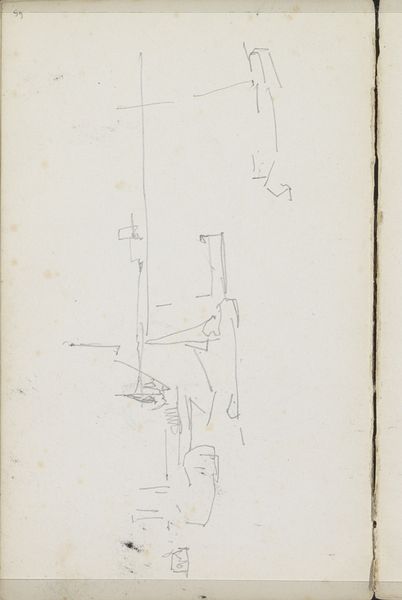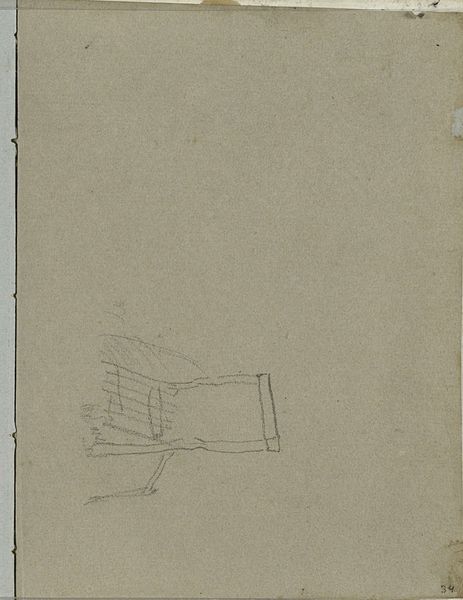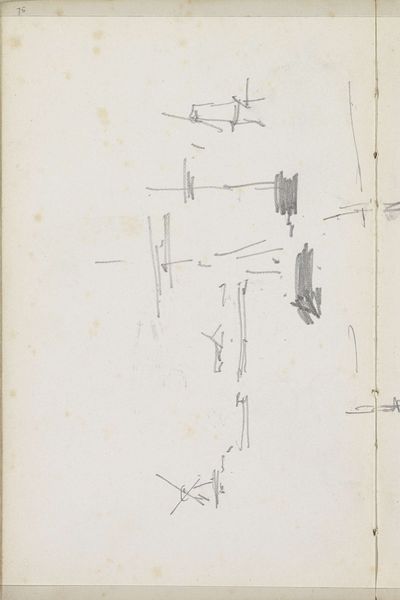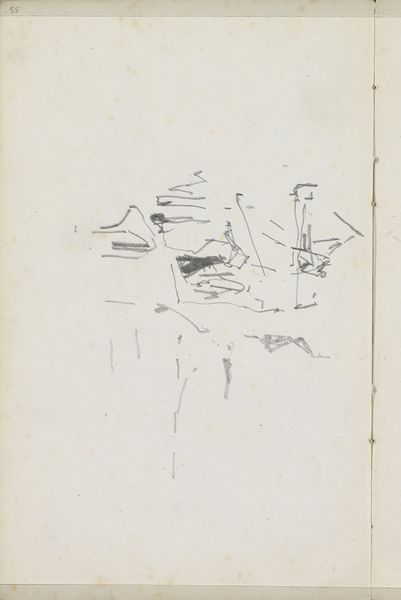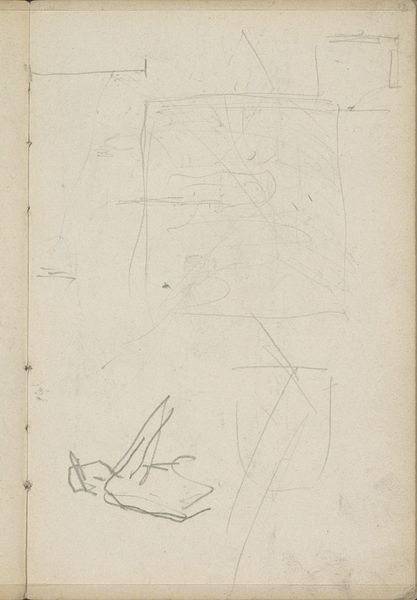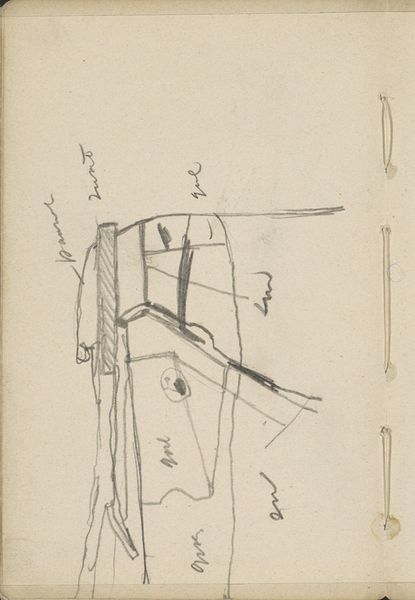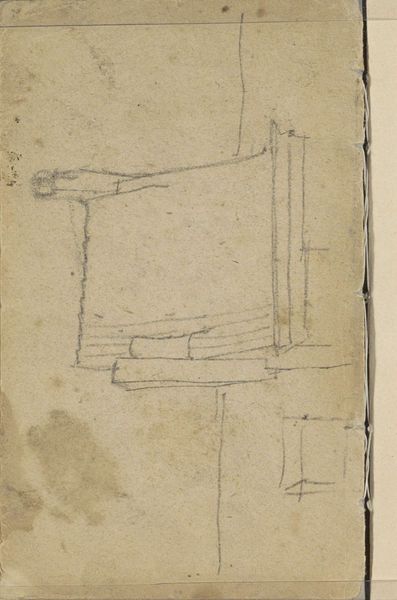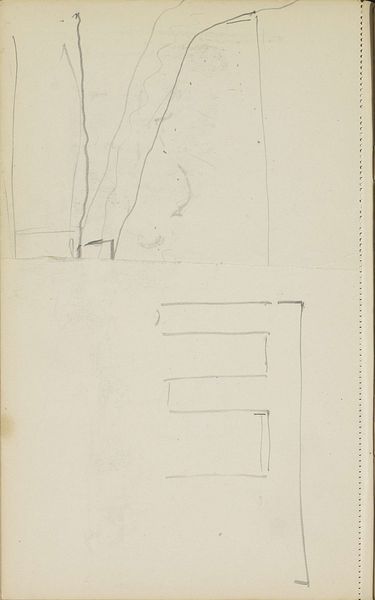
drawing, paper, pencil
#
drawing
#
aged paper
#
toned paper
#
light pencil work
#
art-nouveau
#
ink paper printed
#
sketch book
#
hand drawn type
#
paper
#
personal sketchbook
#
ink drawing experimentation
#
geometric
#
pencil
#
abstraction
#
line
#
sketchbook drawing
#
sketchbook art
Copyright: Rijks Museum: Open Domain
Curator: This intriguing work, simply titled "Studies," comes to us from the sketchbook of Carel Adolph Lion Cachet, circa 1906. Editor: My first impression is one of stark simplicity. Just looking at the thin pencil lines on the toned paper, it feels like I’m intruding on the artist's private thoughts, a peek into their design process. Curator: Precisely. Cachet was deeply embedded in the artistic and political circles of the Dutch Arts and Crafts movement. He grappled with integrating aesthetic ideals with the needs of industry. The Rijksmuseum’s acquisition allows us to trace the intellectual trajectory from his formal studies toward these applications. Editor: Looking closer, you can really see how line dominates. It’s less about capturing a realistic representation and more about pure form and geometry, a dance of rudimentary shapes. What I find fascinating are the numbers sprinkled around each construction—are those notations intentional or accidental? Curator: The notations likely point to practical applications, design parameters, you might say. Cachet wasn't just making art for art’s sake. These “Studies” emerge as the genesis of design elements perhaps for larger commissions that speak to the larger debate happening about the nature of artistic work at the beginning of the 20th Century. Editor: Interesting. To my eye, the abstraction speaks of modernist ideals brewing at that time, focusing more on process. Do we see that process mirrored by artistic production within his contemporary art world? Curator: Indeed. Cachet was quite active in public debates surrounding craft, the decorative arts and their function in creating a new society. His involvement helps explain his deep conviction that even simple lines could hold the potential to reshape cultural landscapes and hierarchies. These sketches act like a bridge connecting Cachet to debates on functional design and mass production. Editor: And yet, there’s an inherent intimacy that's so striking! It’s this interesting contrast of a very accessible sketch versus the public discourse and grand societal ambitions Cachet embodied. Curator: I would agree! Looking at it in its display here within our museum helps highlight this connection: seeing such a direct artifact representing design ideology—rather than only objects manufactured through it—prompts further study and analysis from those within a museum setting. Editor: Ultimately, it reveals how a simple, private gesture can be interwoven with grand social visions. Curator: Precisely. These 'Studies' open the doors through which viewers gain access not only into the development of early abstract form, but how art interacts with historical movements beyond museums!
Comments
No comments
Be the first to comment and join the conversation on the ultimate creative platform.
